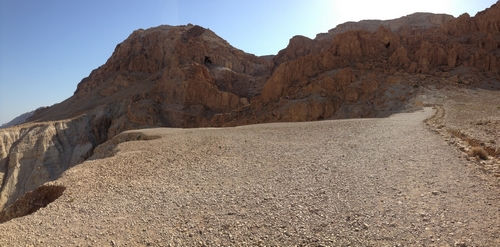
Josephus wrote about four major ‘philosophies’ that came to the forefront during Second Temple Judaism: those of the Pharisees, the Sadducees, the Essenes, and the Zealots. Today at Masada, we learned about the Zealots firsthand. Okay, maybe not firsthand, but kind of…we stood upon one of their most famous sites!
We walked up the siege ramp as a group, and everyone was winded by the time we reached the top. Once we all had a chance to catch our breath, our instructor told us about how the Sicarii (a particularly violent brand of Zealots) occupied the site during a rebellion against Rome. He told us about Josephus’ account of their downfall, which describes a mass suicide after Rome tore down their defenses. However, archaeological evidence seems to contradict Josephus, painting a picture of resistance and fighting to the death instead. Our instructor told us to keep in mind that Josephus was writing for a Roman audience, his goal was to portray his people in a positive light as he sought to preserve their history. Suicide is not an honorable death in Judaism, but it was for Rome – perhaps Josephus chose to contextualize their deaths in a way that would be seen as honorable to the Romans? It’s definitely something to consider.
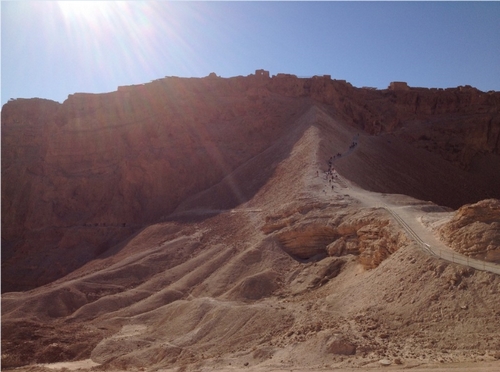
We were given some time to explore the site, and then we had the choice of taking a cable car back to the bottom or walking down a winding snake path to get back to the buses. I chose to go on the hike, which turned more into a precarious downhill run because a classmate and I chose to wait until the last minute to depart (which, unfortunately, wouldn’t surprise anyone who knows me well). We reached the bottom relatively quickly, but I was unbelievably tired at the end. Thankfully, our instructor was gracious and gave us some extra time to re-hydrate before we left.

Next, we traveled to En Gedi, the area where David hid as he fled from Saul in 1 Samuel 23-24. We climbed up to several of the site’s waterfalls, where we once again had the opportunity to pray and read scripture in silence. I would have liked more time in this location, but it was apparent that most of my class was itching to get to our next location…
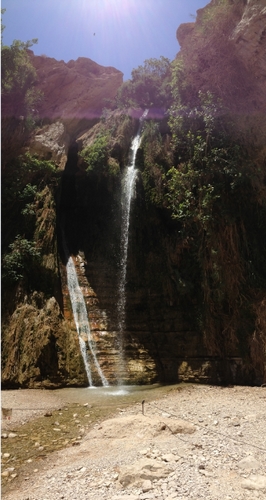
The Dead Sea. Big, salty, floaty. Most of my classmates swam in it, but I was content to take some photos and get my fingertips wet. It was a beautiful sight.
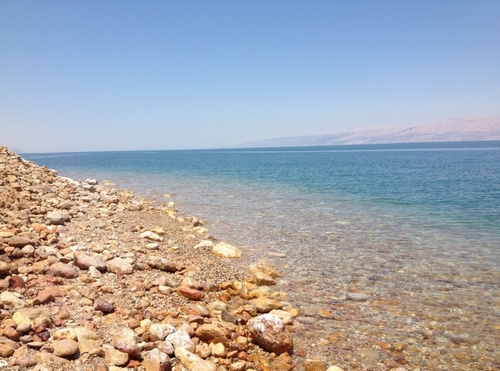
Qumran was mesmerizing. It was here that we discussed the Essenes (the general consensus is that the Qumran community was comprised of Essenes). I had learned about the Essenes in my undergraduate studies, and I was aware that the Dead Sea Scrolls were discovered at Qumran, but I knew very little about their discovery and the fact that the scrolls contained self-referencing (sectarian) writings. I’d love to learn more about this site and its people in the future.
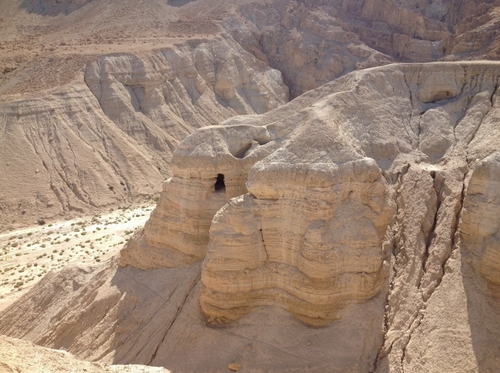
Today was easily the most physically exhausting day of our journey. Although we still have class tomorrow, I’m looking forward to spending a few hours in a museum and limiting my exertion as we travel to a few other sites. As much as I want things to slow down, I understand the need to keep pushing forward. It’s a marathon of a class packed into a three week sprint, and I want to finish well.
